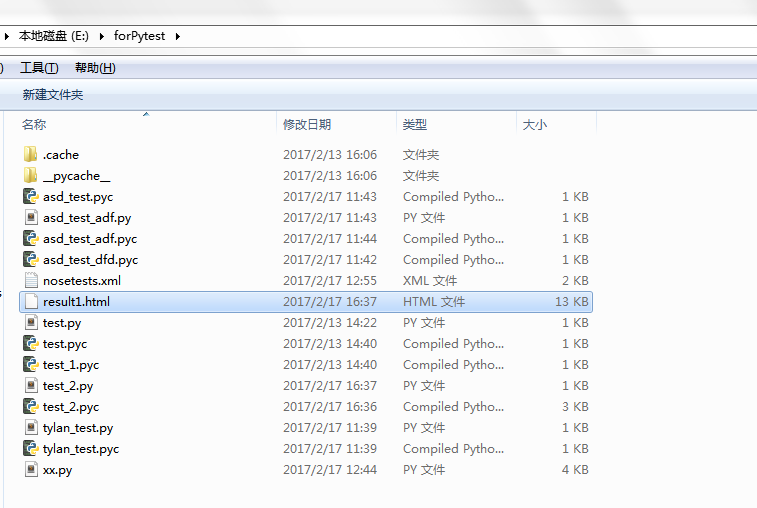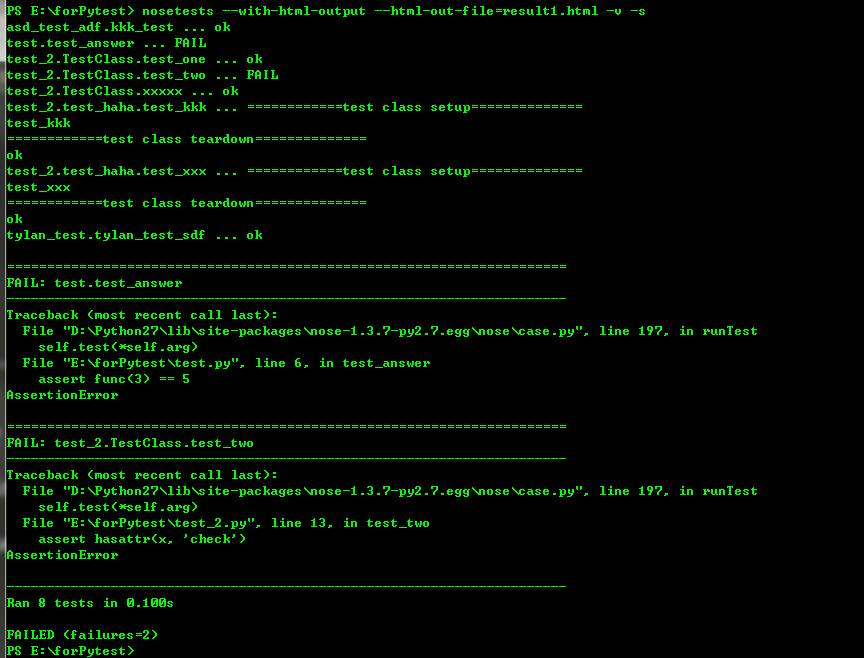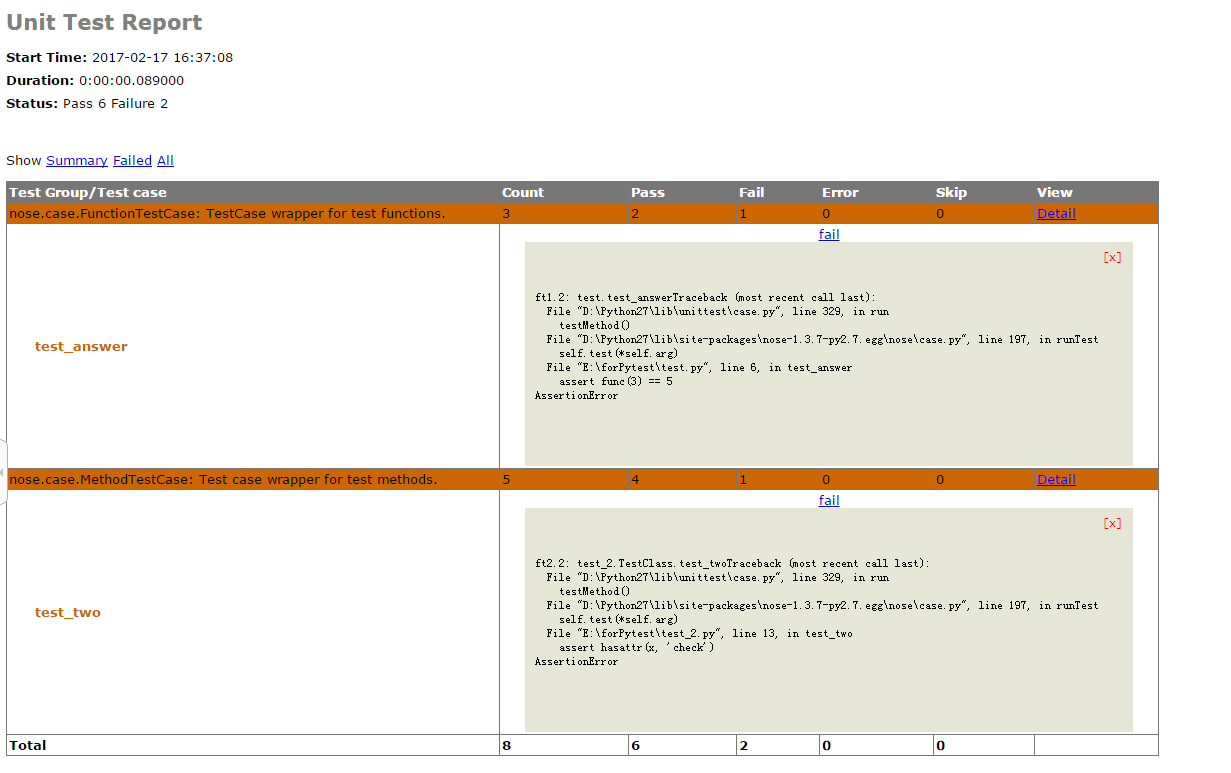安装
Nose会自动查找源文件、目录或者包中的测试用例,符合正则表达式(?:^|[\b_\.%s-])[Tt]est,以及TestCase的子类都会被识别并执行。
例如:我们可以将python脚本文件名以“_test”结尾或包含“_test_”,方法名以“_test”结尾。
使用方法
查看所有nose相关命令:
nosetests -h
执行并捕获输出:
nosetests -s
查看nose的运行信息和调试信息:
nosetests -v9
输出xml结果报告:
nosetests --with-xunit
支持测试方法传参:
1)安装:需要下载插件“nose_ittr”:
pip install nose_ittr
2)脚本中使用示例:
# -*- coding: utf-8 -*- import os from nose.tools import nottest,istest from nose_ittr import IttrMultiplier, ittr curr_dir = os.path.dirname(os.path.abspath(__file__)) class TestCheckChannels(object): __metaclass__ = IttrMultiplier ''' 测试方法传入两个参数 参数一:channels_txt_name 参数二:check_list_txt_name 使用方法:通过“self.参数名”进行调用 ''' @istest @ittr(channels_txt_name=["channels.txt"],check_list_txt_name=["check_list.txt"]) def test_check_channels(self): channels_txt_path = os.path.join(curr_dir,self.channels_txt_name) check_list_txt_path = os.path.join(curr_dir,self.check_list_txt_name) the_channels = [] with open(channels_txt_path) as channels: for line in channels.readlines(): line = line.strip() if line != '': the_channels.append(line) with open(check_list_txt_path) as check_list: check_items = check_list.readlines() for check_item in check_items: if check_item.strip() in the_channels: pass elif check_item=='\n': pass else: print check_item
3)执行示例:
nosetests --with-html-output --html-out-file=result1.html -v --with-setup-ittr
输出html结果报告:
1)安装:需要下载
插件,在解压缩后在命令行中cd到该目录下:
python setup.py install
2)使用:
nosetests --with-html-output --html-out-file=result1.html
1)测试脚本中引入:from nose.tools import nottest,istest;
2)不测试的方法:方法名上加修饰器@nottest;
3)指定为测试方法:方法名上加修饰器@istest(方法名无需符合命名规则);
4)查看要执行的用例列表:nosetests --collect-only -v。
测试项目

脚本示例
from nose.tools import nottest,istest from nose.tools import assert_equal class TestClass: def test_one(self): x = "this" assert 'h' in x def test_two(self): x = "hello" assert hasattr(x, 'check') @nottest def test_three(self): assert True @istest def xxxxx(self): assert True class test_haha(): def setUp(self): print("============test class setup==============") def teardown(self): print("============test class teardown==============") def test_xxx(self): print "test_xxx" assert_equal(9, 9) def test_kkk(self): print "test_kkk" assert_equal(1, 1)
测试执行

测试结果























 1984
1984











 被折叠的 条评论
为什么被折叠?
被折叠的 条评论
为什么被折叠?








